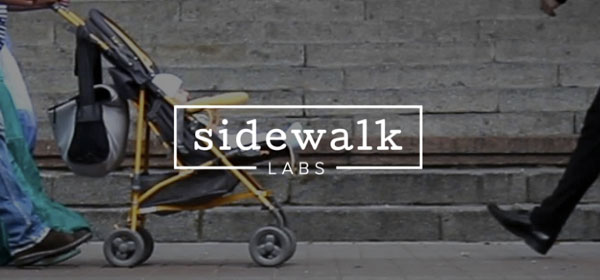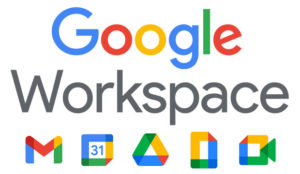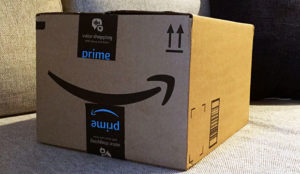Alphabet’s Sidewalk Labs, a sister company of Google, recently began negotiating a plan to help restructure the public transportation system in Columbus, Ohio, after the city won the Obama administration’s national competition to ease traffic gridlock issues.
Sidewalk Labs will leverage its cloud-based transportation data to help Columbus implement a public bus and parking system that will help ease traffic congestion and provide greater access for low-income communities. The plan calls for eventually incorporating ride-sharing and cycling, as well as the possible deployment of autonomous vehicles.
Cloud Data
The project leverages Flow, a collaborative effort of Sidewalk Labs and seven finalists in the Department of Transportation’s Smart City Challenge.
“Flow is about using data and analytics to help cities work with their citizens to increase the efficiency of road, parking and transit use, improving access to mobility for all,” said Anand Babu, chief operating officer of Sidewalk Labs.
“Flow will allow cities to understand their transportation systems in real time and could be used to improve and plan public transportation, guide drivers directly to parking, or point commuters to shared mobility options they can use when public transportation is not an option.”
Columbus is putting together a team to begin implementing the Smart City plan, said Robin Davis, a spokesperson for the city.
However, a final plan has not been reached, and the platform has not yet been put together, according to a source familiar with the talks.
The Columbus Challenge
U.S. Department of Transportation Secretary Anthony Foxx last month announced Columbus had beat out 78 cities to win the Smart City challenge. The winning proposal calls for Columbus to create a new rapid transit system for buses, install street-side mobility kiosks, add smart lighting to help pedestrian safety, and improve access to healthcare for underserved neighborhoods.
“We see the Smart City Challenge grant as a whole, and Sidewalk Labs in particular, as a great opportunity to integrate technology into our transportation system, as well as encourage multimodal transportation by shifting away from traditional single-occupant vehicles,” said Joshua Lapp, vice-chair of Transit Columbus.
“Columbus is a fast growing mid-sized city without much of type of transit infrastructure you see in larger, older cities. In many ways, we as a city are playing catch-up with transit, while preparing to accommodate the estimated 1 million additional people that will be added to the city by 2050,” he told TechNewsWorld.
“In order to do that, we need an efficient, technologically enhanced system that maximizes opportunities for residents and protects our environment,” Lapp continued. “We believe that the partnership with Sidewalk Labs and others will provide those benefits, while enhancing our public transportation and moving our city away from traditional single-occupant commuting.”
The city will install traffic signals that communicate in real time based on the flow, rhythm and demand for street traffic, and it will measure the connectivity of its transportation systems against the city’s infant mortality rate.
“Infant mortality has a great deal to do with neighborhood health,” Columbus spokesperson Davis told TechNewsWorld.
“In Linden, for example, where infant mortality is three times higher than other parts of Columbus, 25 percent of residents don’t have a high school degree or GED. Unemployment is three times as high as the rest of the county, and resident vacancies and incarceration are significantly higher, too,” she pointed out.
“We know that reliable consistent transportation is a key to exiting poverty because it provides access to healthcare, employment, education and fresh fruits and vegetables — which are also keys to lowering infant mortality,” Davis said. “So what we have planned for Linden will help reduce infant mortality.”
The Columbus plan calls for “deploying autonomous vehicles, starting with the Linden region, as part of the first- and last-mile solutions,” she noted. “Residents will be able to take public transportation, then use autonomous vehicles to get from the Easton transit station to their jobs, education or healthcare.”
Local Investment
Columbus will receive up to US$40 million from DoT and $10 million from Paul Allen’s Vulcan to supplement the $90 million that the city already raised from private partners to put the plan in place, according to DoT Secretary Foxx.
“The commitment by Columbus to explore new ways to use technology to reach beyond the tech savvy and easily accessible is commendable, and it underscores the reasons why we started this challenge,” he said.
The Transportation Department is working with government and private sector partners to help the six other finalists — including Austin, Texas; Denver; Kansas City; Pittsburgh; Portland; and San Francisco — to advance plans they submitted since December, when the finalist challenge was launched, Foxx noted.
The U.S. population is expected to grow by about 70 million people over the next three decades, and much of that growth will be in urban areas across the country, said DoT spokesperson Jon Romano. The hope is that a successful plan in a city like Columbus can be scalable to medium-sized cities that will face pressures on their own infrastructures and need to come up with local solutions.
“There is a total data void on street use, public transit and parking management,” said Paul White, executive director at Transportation Alternatives.
“We know city streets are not really working for anyone, but there is a dearth of up-to-date information about parking turnover rates or on-time bus performance stats, for example,” he told TechNewsWorld.
Cities all across the country are under pressure to upgrade their public transit systems as crumbling infrastructure and increasing traffic flows threaten to overwhelm major metropolitan areas, according to Steven Polzin, director of mobility policy research at the University of South Florida’s Center for Urban Transportation Research.
As a result, cities are taking steps like automating fare collection, developing more sophisticated scheduling data, and gathering real-time passenger information to make sure they can match capacity to demand.
“Virtually all agencies across government are implementing some of all of these features as quickly as they can,” Polzin told TechNewsWorld. “What remains to be seen is the magnitude of the impact, and whether they’ll be able to shift the needle in any meaningful way.”






















































